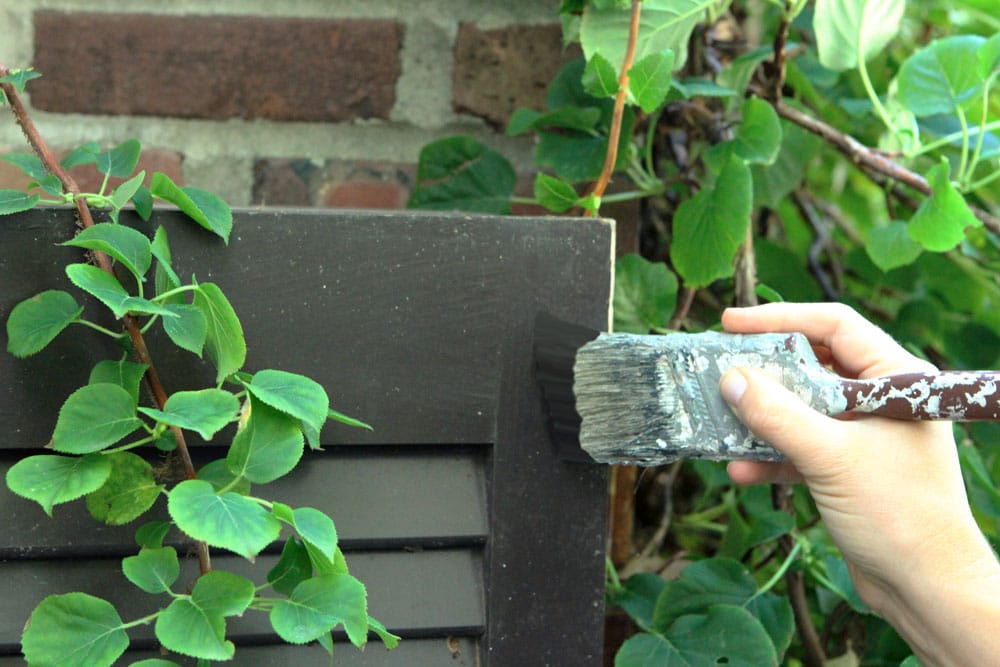Compare Exterior Shutter Materials
| Construction | |||
| Strength & Durability | |||
| Weather Resistance | |||
| Weight | |||
| Appearance | |||
| Finishes | |||
| Installation | |||
| Maintenance | |||
| Cost (ranking 1-6) | |||
| Production Time | |||
| Lifespan | |||
| Best Use | |||
| Styles | |||
| Arch Top Option | |||
Exterior shutters do require simple maintenance and care to maximize appearance and functionality.
To maintain wooden shutters, regularly inspect for deterioration of the finish. Wood naturally expands and contracts with environmental change. Our woods are kiln-dried resulting in minimal movement, but small cracks in the finish may still appear over time. Preservation of composite shutters also requires minor periodic restoration.

Prune vines, trees, or bushes that climb on or make contact with outdoor shutters. Extended branches can scratch the finished surface of exterior shutters when blowing in the wind. Climbing vegetation will actually adhere to the shutters, becoming increasingly difficult to remove and can weaken the paint finish. Plants that are in regular contact with the shutters may hold moisture against the facade, resulting in potential deterioration of the product.
Outdoor shutters installed in heavily shaded areas will also have difficulty drying after precipitation falls. More frequent attention may be required in these areas to maintain the finish of composite and wood shutters.
Cleaning exterior shutters once a year can help to maintain their luster. A simple soapy water solution is usually all that is required. Add a few drops of dish soap to a bucket of warm water. Use a soft-bristle scrub brush to apply and loosen any particles. Rinse by spraying with a garden hose.
Avoid using a pressure washer for this procedure. A forced water system can weaken, and sometimes lift, the finish of painted exterior shutters. Untreated wood will quickly absorb moisture when exposed to concentrated high power water.
Occasional cleaning vinyl shutters may be required to restore the original luster and color.
External vinyl shutters can usually be cleaned satisfactorily with only the use of an ordinary garden hose. For additional cleaning, we suggest scrubbing gently with a soft bristle brush and a cleaning solution of 1/3 cup detergent (Tide for example), 2/3 cup Tri-sodium (Soilax for example), and 4 quarts water. In geographical areas where mildew is a problem, substitute one quart of 5% sodium hydrochloride (Clorox for example) for one quart of water in the formula.
Start washing from the top of the shutter and work down. Apply cleaning solution and let stand for several minutes on the external shutters in order for the dirt to loosen. Rinse thoroughly to avoid streaking.
The original shutter paint finish can become worn over the years, often from outside sources like blowing debris or wildlife. Simple touch-up of minor blemishes is required to prevent moisture penetration. Inspect for softness of the wood on any areas where paint has deteriorated or has been scraped off. Thoroughly clean around the area before using a paintbrush to repaint the raw area.
Use of these simple precautions will ensure the longevity of your exterior window shutters.
While there is some maintenance involved, it does not exceed the best practices in managing any other aspect of the home’s exterior.